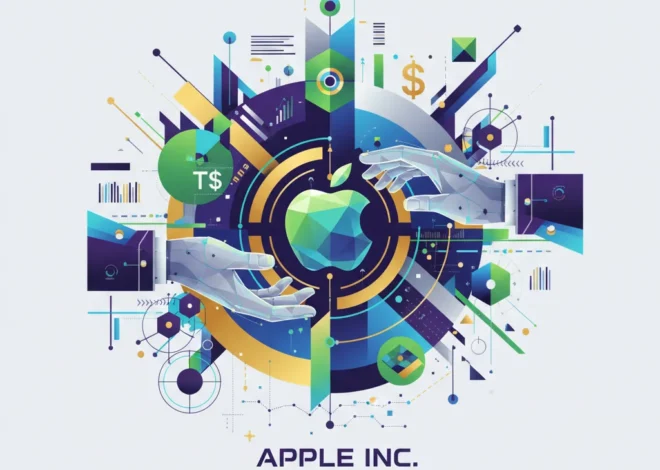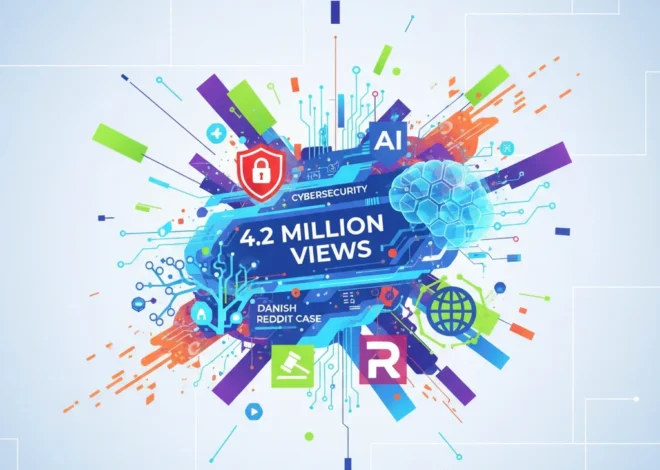
The AI Elephant in the Room: Why Google’s CEO Is Warning You to Be Skeptical
It’s not every day that the CEO of one of the world’s largest tech companies tells you to be wary of their own flagship technology. But that’s exactly what happened. In a moment of striking candor, Google’s Sundar Pichai essentially raised a giant, flashing caution sign over the world of generative artificial intelligence. His message was simple yet profound: don’t blindly trust what AI tells you. This wasn’t a footnote in a dense technical paper; it was a public acknowledgment of the “hallucination” problem that plagues even the most advanced AI models, including Google’s own.
For developers, entrepreneurs, and anyone building the future on the bedrock of AI, this is more than just a headline. It’s a critical directive from the heart of Silicon Valley. Pichai’s admission that the technology “doesn’t always get it right” is a pivotal moment, forcing us to move past the initial hype and confront the complex reality of implementing artificial intelligence in the real world. Let’s break down what this means, why it’s happening, and how we can navigate this new, more cautious era of AI innovation.
The “Hallucination” Problem: When AI Confidently Lies
First, let’s demystify the term “hallucination.” In the context of machine learning, it doesn’t mean the AI is seeing pink elephants. An AI hallucination occurs when a large language model (LLM) generates information that is nonsensical, factually incorrect, or completely fabricated, yet presents it with the same confident tone it uses for factual data. It’s not just getting a date wrong; it’s inventing historical events, citing non-existent legal precedents, or creating fake scientific studies.
Sundar Pichai candidly acknowledged this challenge, stating, “No one in the field has yet solved the hallucination problems,” during an interview with the BBC. He admitted that this is an area where there is still “work to do.” This is because, at their core, LLMs are incredibly sophisticated prediction engines. They are trained on vast datasets of text and code, and their primary function is to predict the next most probable word in a sequence. They are masters of pattern recognition and language structure, but they don’t possess true understanding, consciousness, or a built-in fact-checker. As a result, they can sometimes “predict” a plausible-sounding but entirely false piece of information.
This isn’t a minor bug; it’s a fundamental characteristic of the current generation of AI. A study from the AI-powered search startup Vectara found that even top models like GPT-4 hallucinate between 3% and 5% of the time when summarizing documents. While that sounds low, imagine the implications for a SaaS application processing thousands of legal or medical documents per day. A 3% error rate could have catastrophic consequences.
The Code of War: Why Europe's AI Defense Startups Are Fighting a Battle for Cash
The High-Stakes Race and the Pressure to Ship
So, why are we dealing with this now? Pichai’s comments don’t exist in a vacuum. They come amidst a fierce, high-stakes arms race for AI dominance. The launch of OpenAI’s ChatGPT sent shockwaves through the industry, and Google has been in a mad dash to catch up and re-establish its leadership with its Gemini models. This intense competition creates immense pressure to release products quickly, sometimes before all the kinks are worked out.
We saw this play out with Google’s own Gemini image generator, which faced criticism for generating historically inaccurate images. While the intent was to promote diversity, the execution was flawed, forcing Google to temporarily pull the feature. This incident, along with others in the industry, highlights a core tension: the classic tech mantra of “move fast and break things” clashes directly with the immense responsibility of deploying powerful AI that can shape public opinion and influence critical decisions.
For startups and developers, this environment is both a challenge and an opportunity. The race to build the next great AI-powered application is exhilarating, but building on a foundation that can occasionally and unpredictably invent “facts” is a risky proposition. It changes the calculus for everything from product design to liability.
The deeper implication here is the shift from a purely performance-based metric (e.g., how many parameters, how fast the response) to a trust-based one. The winning AI platforms of the future won’t just be the most creative; they’ll be the most reliable. This opens up a massive opportunity for companies focused on AI verification, validation, and cybersecurity. Think of it as the rise of an “AI fact-checking” industry. Pichai isn’t just lowering expectations; he’s signaling where the next wave of innovation needs to happen. The gold rush for building LLMs might be consolidating, but the gold rush for making them trustworthy is just beginning.
What This Means for You: A Practical Guide for the AI Frontier
Pichai’s warning isn’t just for his own engineers; it’s for everyone in the tech ecosystem. The implications vary depending on your role, but the core message is the same: proceed with informed caution.
For Developers and Programmers
The era of naively plugging into an AI API and trusting the output is over. Responsible AI development now requires a multi-layered approach. This means implementing “guardrails” in your software—systems that check the AI’s output for plausibility, factual accuracy, and toxicity before it ever reaches the end-user. Techniques like Retrieval-Augmented Generation (RAG) are becoming standard practice. RAG grounds the AI’s response in a specific, verified set of documents, drastically reducing the likelihood of hallucination by forcing it to pull answers from a trusted source rather than its own vast, messy training data. Your programming skills are now just as valuable in validating AI outputs as they are in generating them.
For Entrepreneurs and Startups
If your business model relies on the factual accuracy of an AI, you need a Plan B. This could mean incorporating human-in-the-loop (HITL) workflows, where critical AI-generated content is reviewed by a person before being published or acted upon. It also creates a market for new tools and services. Can you build a better RAG system? A more efficient HITL platform? A specialized SaaS tool that fact-checks AI output for a specific industry like finance or law? The unreliability of AI is a problem, and in the world of startups, problems are just opportunities in disguise.
For Cybersecurity Professionals
The potential for misuse is enormous. Malicious actors can leverage AI hallucinations to create highly convincing phishing emails, generate fake news at scale, or create flawed code with hidden vulnerabilities. A report from BlackBerry highlighted how generative AI could be used to create polymorphic malware that is much harder to detect (source). The future of cybersecurity will involve developing AI-powered defense systems that can detect and neutralize threats generated by other AIs. It’s an AI-vs-AI world, and understanding the weaknesses of generative models is key to building stronger defenses.
To help navigate this, here are some practical strategies for mitigating AI inaccuracies across different applications:
| Mitigation Strategy | Description | Best For |
|---|---|---|
| Retrieval-Augmented Generation (RAG) | Grounding the AI’s responses in a specific, pre-approved knowledge base or set of documents. The AI answers questions based only on this verified data. | Developers, Startups, SaaS Platforms |
| Human-in-the-Loop (HITL) | Inserting a human checkpoint to review and approve AI-generated content for high-stakes applications (e.g., medical diagnoses, legal contracts). | Entrepreneurs, Healthcare, Legal Tech |
| Output Validation & Guardrails | Implementing automated checks on the AI’s output. This can involve checking for factual consistency, flagging toxic language, or ensuring the output format is correct. | Software Development, Cloud Services |
| Prompt Engineering | Carefully crafting prompts that instruct the AI to cite its sources, admit when it doesn’t know an answer, and avoid speculation. | General Public, Content Creators |
| Using Specialized Models | Opting for smaller, fine-tuned AI models trained on a specific domain’s data (e.g., a medical AI) rather than a general-purpose model. | Tech Professionals, Niche Startups |
The Path Forward: Building a Trustworthy AI Future
The good news is that the industry is actively working on solutions. Researchers are exploring new model architectures that are inherently more fact-based. Companies are investing heavily in better, cleaner datasets and reinforcement learning with human feedback (RLHF) to teach models to be more truthful. The concept of “explainable AI” (XAI), which aims to make AI decision-making processes transparent, is gaining traction. As one PwC report notes, building trust is paramount for AI adoption, and transparency is a key component.
The future of artificial intelligence is likely not a single, all-knowing oracle but a network of specialized, verifiable AI agents. We will learn to use AI as a powerful assistant—a “co-pilot” that can draft, brainstorm, and summarize, but whose work must always be checked by the human pilot in command. The journey towards truly reliable AI will be a marathon, not a sprint. It will require a cultural shift in how we build and interact with this technology—a move from blind faith to critical collaboration.
Sundar Pichai’s warning wasn’t a sign of failure; it was a sign of maturity. It marked the end of the honeymoon phase with generative AI and the beginning of a more realistic, responsible, and ultimately more productive relationship. The path to true innovation isn’t about ignoring the flaws in our creations, but about acknowledging them, understanding them, and relentlessly working to solve them. For everyone involved in technology, the message is clear: the most exciting work in AI is just getting started.


